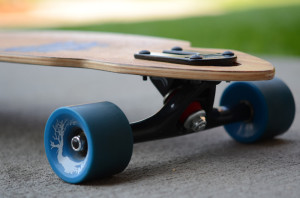The History of Longboarding
With the winter Olympics underway, there’s been a lot of talk about snowboarding. But let’s look back a little farther on what came BEFORE snowboarding: longboarding. All you need is a long plank of wood, trucks and four wheels and you have the ability to coast along pavement like a surfer would on water. In fact, surfing is where longboarding and skateboarding got their start. Nowadays, the water version and land versions of boarding stand apart, but they still have histories that intertwine with each other. From the genesis of sidewalk surfing all the way to the modern day competitions, longboarding has come a long way.
Sidewalk Surfing
The lifespan of longboarding can be traced all the way back to approximately the 1950s. Longboarding and skateboarding came to be when surfers in Hawaii began taking their aquatic pastime on land. When the waves weren’t big enough for a satisfactory day of surfing, the surfers found that they could imitate those same actions by using a skateboard on the sidewalk. Thus, sidewalk surfing and skateboards were born. For surfers and teens, skateboarding then quickly caught on in California before skateboards themselves would begin to be modified.
Skateboards to Longboards
After the initial injection of sidewalk surfing into the youth of America, skateboards began changing. When companies began manufacturing skateboards in 1959, they were sold as toys. The toy version of skateboards were too small for many riders who outgrew them, so many teenage boys started attaching roller skate wheels to a plank of some sort to make it big enough for them to ride. Gradually, skateboards went from toys to homemade contraptions to more-refined boards. Eventually, the modern longboard was created out of a desire for a smoother ride from a longer board. Today, longboards come in all sorts of customizations to suit any kind of rider.
Evolution of Wheels
When teenagers began making their own skateboards, metal wheels from roller skates were attached to the bottom of a board. Soon thereafter, the hazard of metal wheels made riders, (and their parents), look to a safer alternative. In fact, the danger of skateboarding actually caused it to die out in the 1960s. However, skateboards kept evolving. The metal wheels were replaced with safer clay ones and trucks were even improved. Then, in the 1970s, skateboarding and longboarding jumped in popularity with the introduction of urethane wheels. Both stronger and faster than its predecessors, urethane wheels allowed for much more versatile ride, causing rapid expansion of the sport.
Recent History
Although urethane wheels helped skateboards and longboards become more mainstream, the true explosion of the sport started at the end of the millennium. Led by star skateboarder Tony Hawk, many celebrity boarders gained media attention through tricks and competitions. In addition, snowboarders began switching to longboards during the warmer months of the year, raising the popularity even more. Now, longboarding and skateboarding can be found on college campuses, in skate parks, in the driveways of homes and even in major competitions, like the X Games.
With roots in surfing, longboards have come a long way since giving people in Hawaii an alternative when the waves weren’t great. Now, longboarding has blossomed and has found a place in competitions with events like downhill racing. From metal wheels and a plank of wood to customizable boards built professionally for any kind of rider, longboarding has evolved into a modern pastime that can be found almost anywhere there is pavement to ride on.













